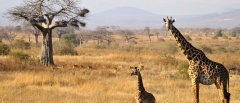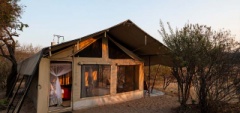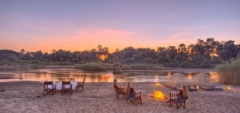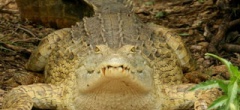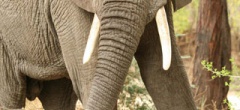Ruaha National Park
Only a handful of people come here a year which, considering the quality of game, is madness...
Approximately an hour and a half flying time to the west of the Selous, Ruaha National Park is often paired with its neighbour and provides the perfect foil. Where the Selous is verdant and riverine, Ruaha is barren and sparse. Where the Selous has elephant, hippo and crocodile, Ruaha has lions, buffalo and leopard. In every sense, to step into Ruaha is to step into how Africa has existed forever.
A much smaller park than the Selous, Ruaha sits, almost, in the centre of the country and is surrounded by scorched red earth and not much else. Named after the Great Ruaha River that runs through the northern section of the park (and continues east to meet with the Rufiji River), the park is still very much untouched by tourism and the advent of civilisation.
The first striking feature of the park, apart from the red soil, is the baobab trees that mark the horizon in every direction. These archaic and sedentary trees are often found in large forests and make for some remarkable sights on a game drive. Another remarkable feature of the park is the large populations of lion that inhabit. Often seen in prides of up to 25 and even thirty, the lions of Ruaha are often seen taking on the mighty cape buffalo that wander the plains and it is one of the only places in Africa that this phenomenon can be seen regularly. (if this is your thing then the Duba Plains to the east of Botswana's Okavango Delta is definitely a must visit for you where the lion prides here have made it a speciality!)
Due to the distance (and cost) involved in getting here, many safari goers tend not to bother making the trip and so there are few options for accommodation....but this is a good thing...trust us! The range that there is caters to pretty much everyone with low impact tents to luxurious lodges all being on offer. For us, the best game is to be seen in the central areas of the park around the Msembe region and the Mdonya River.


